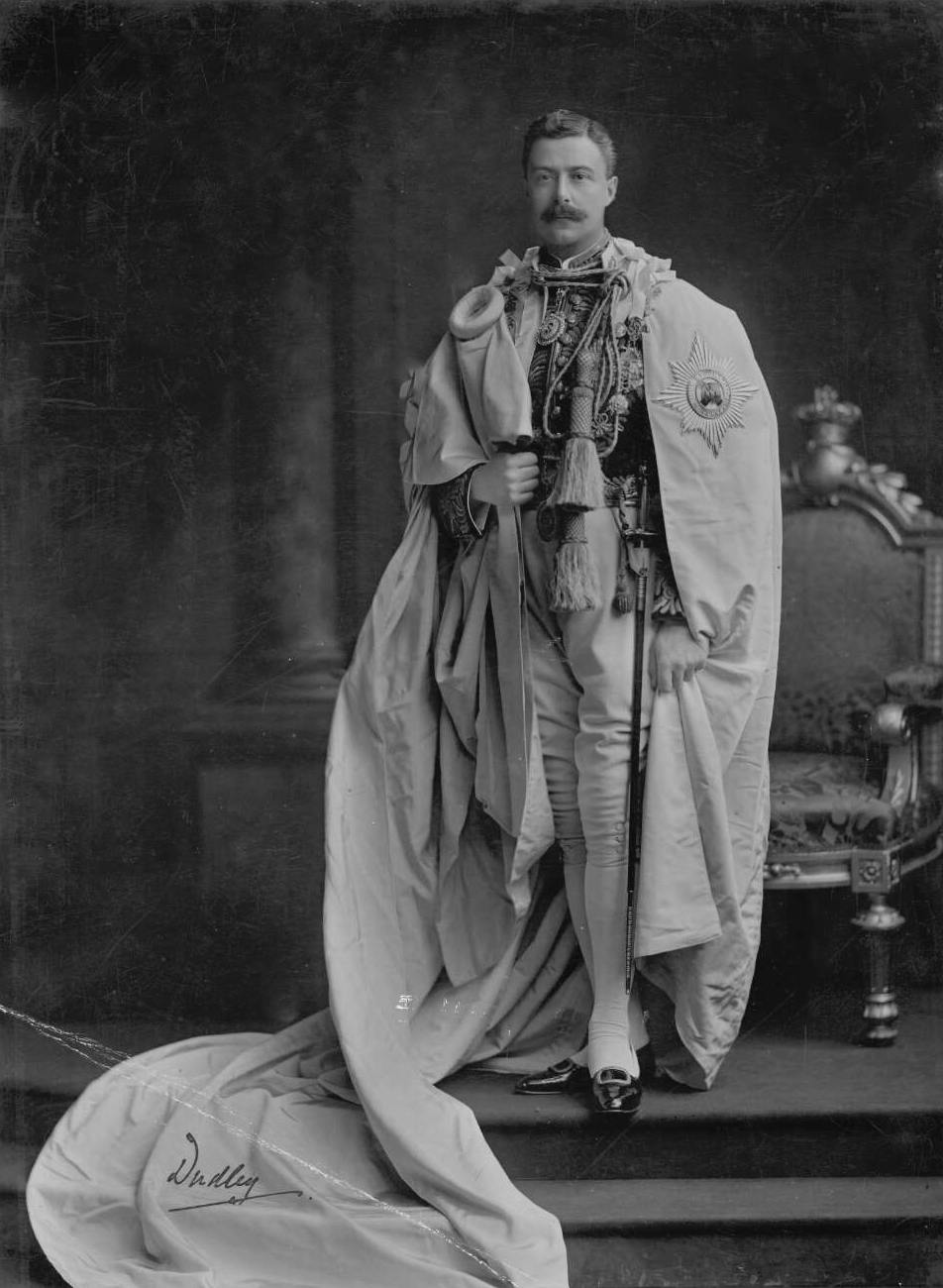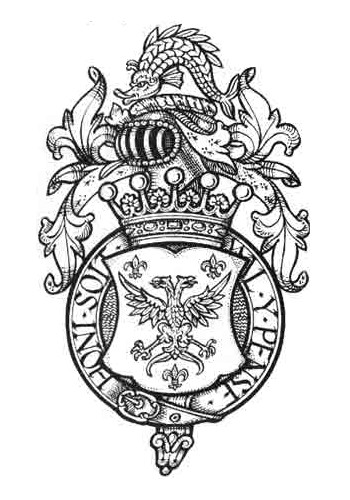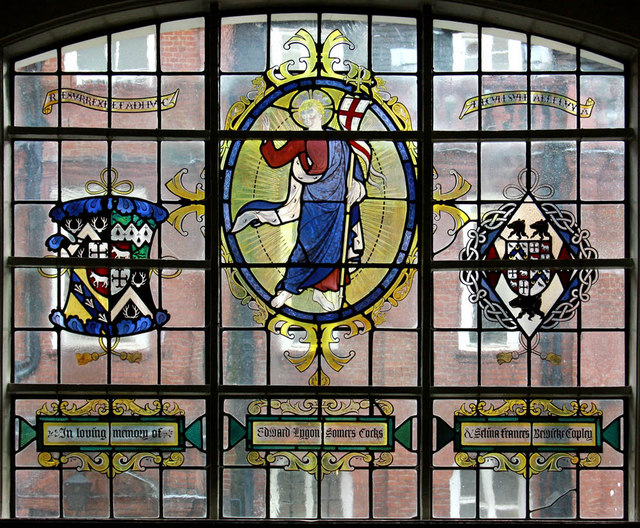|
Joseph Addison
Joseph Addison (1 May 1672 – 17 June 1719) was an English essayist, poet, playwright and politician. He was the eldest son of The Reverend Lancelot Addison. His name is usually remembered alongside that of his long-standing friend Richard Steele, with whom he founded '' The Spectator'' magazine. His simple prose style marked the end of the mannerisms and conventional classical images of the 17th century. Life and work Background Addison was born in Milston, Wiltshire, but soon after his birth his father, Lancelot Addison, was appointed Dean of Lichfield and the family moved into the cathedral close. His father was a scholarly English clergyman. Joseph was educated at Charterhouse School, London, where he first met Richard Steele, and at The Queen's College, Oxford. He excelled in classics, being specially noted for his Latin verse, and became a fellow of Magdalen College. In 1693, he addressed a poem to John Dryden, and his first major work, a book of the lives of ... [...More Info...] [...Related Items...] OR: [Wikipedia] [Google] [Baidu] |
Kit-Cat Club
The Kit-Cat Club (sometimes Kit Kat Club) was an early 18th-century English club in London with strong political and literary associations. Members of the club were committed Whigs. They met at the Trumpet tavern in London and at Water Oakley in the Berkshire countryside. The first meetings were held at a tavern in Shire Lane (parallel with Bell Yard and now covered by the Royal Courts of Justice) run by an innkeeper called Christopher Catt. He gave his name to the mutton pies known as "Kit Cats" from which the name of the club is derived. The club later moved to the Fountain Tavern on The Strand (now the site of Simpson's-in-the-Strand), and latterly into a room specially built for the purpose at Barn Elms, the home of the secretary Jacob Tonson. In summer, the club met at the Upper Flask, Hampstead Heath. Origins The origin of the name "Kit-Cat Club" is unclear. In 1705 Thomas Hearne wrote: "The Kit Cat Club got its name from Christopher Catling. ote, a Pudding Py ... [...More Info...] [...Related Items...] OR: [Wikipedia] [Google] [Baidu] |
Magdalen College, Oxford
Magdalen College (, ) is a constituent college of the University of Oxford. It was founded in 1458 by William of Waynflete. Today, it is the fourth wealthiest college, with a financial endowment of £332.1 million as of 2019 and one of the strongest academically, setting the record for the highest Norrington Score in 2010 and topping the table twice since then. It is home to several of the university's distinguished chairs, including the Agnelli-Serena Professorship, the Sherardian Professorship, and the four Waynflete Professorships. The large, square Magdalen Tower is an Oxford landmark, and it is a tradition, dating to the days of Henry VII, that the college choir sings from the top of it at 6 a.m. on May Morning. The college stands next to the River Cherwell and the University of Oxford Botanic Garden. Within its grounds are a deer park and Addison's Walk. History Foundation Magdalen College was founded in 1458 by William of Waynflete, Bishop of Winch ... [...More Info...] [...Related Items...] OR: [Wikipedia] [Google] [Baidu] |
Thomas Wharton, 1st Marquess Of Wharton
Thomas Wharton, 1st Marquess of Wharton PC (August 1648 – 12 April 1715) was an English nobleman and politician. A man of great charm and political ability, he was also notorious for his debauched lifestyle. Background He was the son of Philip Wharton, 4th Baron Wharton, and his second wife, Jane Goodwin, only daughter of Colonel Arthur Goodwin of Upper Winchendon, Buckinghamshire, and heiress to the extensive Goodwin estates in Buckinghamshire, including Winchendon, Wooburn, Waddeston, Weston, and other properties. Career In his long political career, he was a Member of Parliament for seventeen years and spearheaded the Whig opposition to King James II's government, which later developed the two-party political system under Queen Anne. Before the Glorious Revolution he was in close contact with a group of army officers conspiring against King James, including his brother Captain Henry Wharton. In 1689 he was sworn of the Privy Council and made Comptroller of ... [...More Info...] [...Related Items...] OR: [Wikipedia] [Google] [Baidu] |
Lord Lieutenant Of Ireland
Lord Lieutenant of Ireland (), or more formally Lieutenant General and General Governor of Ireland, was the title of the chief governor of Ireland from the Williamite Wars of 1690 until the Partition of Ireland in 1922. This spanned the Kingdom of Ireland (1541–1800) and the United Kingdom of Great Britain and Ireland (1801–1922). The office, under its various names, was often more generally known as the Viceroy, and his wife was known as the vicereine. The government of Ireland in practice was usually in the hands of the Lord Deputy up to the 17th century, and later of the Chief Secretary for Ireland. Role The Lord Lieutenant possessed a number of overlapping roles. He was * the representative of the King (the "viceroy"); * the head of the executive in Ireland; * (on occasion) a member of the English or British Cabinet; * the fount of mercy, justice and patronage; * (on occasion) commander-in-chief in Ireland. * Grand Master of the Order of St. Patrick Prior to th ... [...More Info...] [...Related Items...] OR: [Wikipedia] [Google] [Baidu] |
Lostwithiel (UK Parliament Constituency)
Lostwithiel was a rotten borough in Cornwall which returned two Members of Parliament to the House of Commons in the English and later British Parliament from 1304 to 1832, when it was abolished by the Great Reform Act. History The borough consisted of the town of Lostwithiel and part of the neighbouring Lanlivery parish; it was a market town whose trade was mainly dependent on the copper mined nearby. Unlike many of the most notorious Cornish rotten boroughs, Lostwithiel had been continuously represented since the Middle Ages and was originally of sufficient size to justify its status. However, by the time of the Great Reform Act it had long been a pocket borough, under the complete control of the Earls of Mount EdgcumbePage 144, Lewis Namier, ''The Structure of Politics at the Accession of George III ''The Structure of Politics at the Accession of George III'' was a book written by Lewis Namier. At the time of its first publication in 1929 it caused a historiographical ... [...More Info...] [...Related Items...] OR: [Wikipedia] [Google] [Baidu] |
Whigs (British Political Party)
The Whigs were a political faction and then a political party in the Parliaments of England, Scotland, Ireland, Great Britain and the United Kingdom. Between the 1680s and the 1850s, the Whigs contested power with their rivals, the Tories. The Whigs merged into the new Liberal Party with the Peelites and Radicals in the 1850s, and other Whigs left the Liberal Party in 1886 to form the Liberal Unionist Party, which merged into the Liberals' rival, the modern day Conservative Party, in 1912. The Whigs began as a political faction that opposed absolute monarchy and Catholic Emancipation, supporting constitutional monarchism with a parliamentary system. They played a central role in the Glorious Revolution of 1688 and were the standing enemies of the Roman Catholic Stuart kings and pretenders. The period known as the Whig Supremacy (1714–1760) was enabled by the Hanoverian succession of George I in 1714 and the failure of the Jacobite rising of 1715 by Tory rebels. Th ... [...More Info...] [...Related Items...] OR: [Wikipedia] [Google] [Baidu] |
Jacob Tonson
Jacob Tonson, sometimes referred to as Jacob Tonson the Elder (1655–1736), was an eighteenth-century English bookseller and publisher. Tonson published editions of John Dryden and John Milton, and is best known for having obtained a copyright on the plays of William Shakespeare by buying up the rights of the heirs of the publisher of the Fourth Folio after the Statute of Anne went into effect. He was also the founder of the famous Kit-Cat Club. His nephew, Jacob Tonson the Younger (1682–1735), was his business partner. The business was continued by the younger Tonson's son, Jacob Tonson (1714–1767). History Scholars have not always been sure of Tonson's birthdate, and it has in the past been listed as occurring in 1655 or 1656. But the register of christenings in the parish of St Andrew Holborn demonstrates that Tonson was born on 12 November 1655 and baptized 18 November 1655. The register lists Tonson as the "sonne of Jacob Tonson Shoemaker and of Elizabeth his wife near ... [...More Info...] [...Related Items...] OR: [Wikipedia] [Google] [Baidu] |
Sidney Godolphin, 1st Earl Of Godolphin
Sidney Godolphin, 1st Earl of Godolphin, (15 June 1645 – 15 September 1712) was a leading British politician of the late 17th and the early 18th centuries. He was a Privy Councillor and Secretary of State for the Northern Department before he attained real power as First Lord of the Treasury. He was instrumental in negotiating and passing the Acts of Union 1707 with Scotland, which created the Kingdom of Great Britain. He had many other roles, including that of Governor of Scilly. Family and early career He came from an ancient Cornish family as the son of Sir Francis Godolphin (1605–1667) and nephew of the poet Sidney Godolphin. At the Restoration, he was introduced into the royal household by King Charles II of England, whose favourite he had become, and he also entered the House of Commons as member for Helston, in Cornwall. Although he spoke few words before the House, they were so to the point that he "gradually acquired a reputation as its chief if not it ... [...More Info...] [...Related Items...] OR: [Wikipedia] [Google] [Baidu] |
Battle Of Blenheim
The Battle of Blenheim (german: Zweite Schlacht bei Höchstädt, link=no; french: Bataille de Höchstädt, link=no; nl, Slag bij Blenheim, link=no) fought on , was a major battle of the War of the Spanish Succession. The overwhelming Allied victory ensured the safety of Vienna from the Franco-Bavarian army, thus preventing the collapse of the reconstituted Grand Alliance. Louis XIV of France sought to knock the Holy Roman Emperor, Leopold, out of the war by seizing Vienna, the Habsburg capital, and gain a favourable peace settlement. The dangers to Vienna were considerable: Maximilian II Emanuel, Elector of Bavaria, and Marshal Ferdinand de Marsin's forces in Bavaria threatened from the west, and Marshal Louis Joseph de Bourbon, duc de Vendôme's large army in northern Italy posed a serious danger with a potential offensive through the Brenner Pass. Vienna was also under pressure from Rákóczi's Hungarian revolt from its eastern approaches. Realising the danger, the D ... [...More Info...] [...Related Items...] OR: [Wikipedia] [Google] [Baidu] |
William III Of England
William III (William Henry; ; 4 November 16508 March 1702), also widely known as William of Orange, was the sovereign Prince of Orange from birth, Stadtholder of Holland, Zeeland, Utrecht, Guelders, and Overijssel in the Dutch Republic from the 1670s, and King of England, Ireland, and Scotland from 1689 until his death in 1702. As King of Scotland, he is known as William II. He is sometimes informally known as "King Billy" in Ireland and Scotland. His victory at the Battle of the Boyne in 1690 is commemorated by Unionists, who display orange colours in his honour. He ruled Britain alongside his wife and cousin, Queen Mary II, and popular histories usually refer to their reign as that of "William and Mary". William was the only child of William II, Prince of Orange, and Mary, Princess Royal, the daughter of King Charles I of England, Scotland, and Ireland. His father died a week before his birth, making William III the prince of Orange from birth. In 1677, he married h ... [...More Info...] [...Related Items...] OR: [Wikipedia] [Google] [Baidu] |
Charles Montague, 1st Earl Of Halifax
Charles Montagu, 1st Earl of Halifax, (16 April 1661 – 19 May 1715), was an English statesman and poet. He was the grandson of the 1st Earl of Manchester and was eventually ennobled himself, first as Baron Halifax in 1700 and later as Earl of Halifax in 1714. As one of the three members of the so-called Whig Junto, Montagu played a major role in English politics under the reigns of King William III and Queen Anne. He served as Chancellor of the Exchequer from 1694 to 1699 and as First Lord of the Treasury from 1714 until his death the following year. He was also president of the Royal Society and a patron of the scientist Isaac Newton. Early life Charles Montagu was born in Horton, Northamptonshire, to Elizabeth Irby and George Montagu, fifth son of the 1st Earl of Manchester. He was educated first in the country, and then at Westminster School, where he was chosen as a Queen's Scholar in 1677, and entered into close friendship with George Stepney. In 1679 Mon ... [...More Info...] [...Related Items...] OR: [Wikipedia] [Google] [Baidu] |
Lord Somers
Baron Somers, of Evesham in the County of Worcester, is a title that has been created twice. The title was first created in the Peerage of England in 1697 for Sir John Somers, so that he could sit in the House of Lords and serve as Lord Chancellor. The title became extinct on Lord Somers' death in 1716. His sister and co-heiress, Mary Somers, married Charles Cocks, a member of a prominent Worcestershire family. Their grandson Charles Cocks represented Reigate in Parliament from 1747 to 1784, and was created a baronet, of Dumbleton in the County of Gloucester, in the Baronetage of Great Britain in 1772. In 1784 the barony held by his great-uncle was revived when he was made Baron Somers, of Evesham in the County of Worcester, in the Peerage of Great Britain. His eldest son, the second Baron, sat as a Member of Parliament for West Looe, Grampound and Reigate and also served as Lord Lieutenant of Herefordshire. In 1821 he was created Viscount Eastnor, of Eastnor Castle in the C ... [...More Info...] [...Related Items...] OR: [Wikipedia] [Google] [Baidu] |
.jpg)

.jpg)




.jpg)

